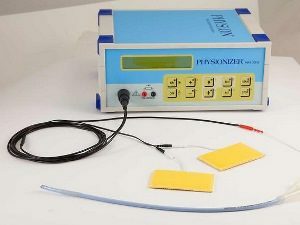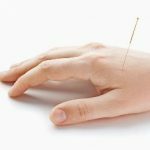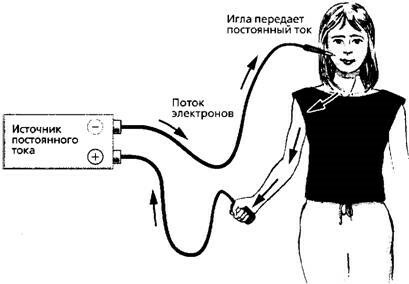Physiotherapy procedures are an excellent addition to the standard methods of treatment of various diseases. But like any external effect on the body, physiotherapy has its positive and negative sides.
One of the most common procedures in a complex of physiotherapy techniques is electrophoresis. However, is it possible to use electrophoresis for menstruation? To answer the question, you need to carefully evaluate the pros and cons of this method of affecting the female body.
Basic physicalprinciples of the effect of the technique on the health of women
Therapeutic electrophoresis is based on the physical principle of exposureand the affected organs and tissues of small values of direct current. Electric particles positively influence the work of the cell, enhance metabolic processes in tissues, promote regeneration.
In addition to directly affecting the body, electrical particles contribute to the penetration of organs and systems of a wide variety of drugs into the cells. Such introduction of medical ingredients is considered the most safe, although it is inferior in effectiveness to traditional injections or tablets. For example, electrophoresis with lidase( with monthly it can be done) is able to help adjust the body to conception.
Drugs come through the skin glands and interstitial space in the form of positively or negatively charged particles. The drug accumulates in the subcutaneous fat and during 2 - 3 days, along with blood spread throughout the body of a woman.
Since the absorption of the therapeutic agent is prolonged, directly affects the body from 5% to 20% of the administered substance. Given this feature, it is proposed to increase the amount of the drug on the fabric pads of the apparatus for electrophoresis.
Another way to enhance the effect of this technique is to apply the electrodes as far as possible directly to the affected area of the body or diseased organ. Due to the accumulation effect, it is possible to increase the maximum allowable dose of the drug without harmful consequences for the patient's health.

It should be noted one more positive side of this method of physiotherapy. If drugs enter the tissues with the help of electrodes, they, unlike tablets and capsules, do not enter the digestive tract, which reduces the risk of allergic reactions and stomach and intestinal problems at times.
The purpose of the procedure for the treatment of
This physiotherapy technique has been used in the treatment of various diseases for more than 100 years, so specialists have accumulated a lot of experience in its implementation. First of all, electrophoresis is good for various inflammatory processes.
The method of direct current exposure perfectly copes with local and general inflammation of tissues, reduces edema and, accordingly, reduces the strength of the pain syndrome. This is due to increased metabolic processes in the cells of the affected areas and the stabilization of the blood vessels in these areas.
Electrophoresis perfectly helps with various neurological pathologies, removing spasm of muscles, strengthening microcirculation processes at the cellular level. With various injuries accompanied by tissue damage, this method of treatment can accelerate regeneration processes by more than 50%.

When a patient questions whether it is possible to do electrophoresis with menstruation, the expert should explain to the woman all the positive aspects of this procedure and her influence on the hormonal support of the female body during this period.
How the procedure is performed
The mechanism for performing therapeutic electrophoresis is quite simple. If certain rules are observed, the specialist will be able to achieve the desired result for the minimum number of sessions, and without any unpleasant sensations on the part of the patient.

Apparatus for electrophoresis
There are several ways of introducing a woman's medicinal substances into an organism with the help of an electric current. Here are some of them:
- "Vannochkovaya" procedure implies immersing the diseased part of the body in a special medical vessel with electrodes and a medical solution. The direct current supplied to the electrodes facilitates the rapid absorption of the drug into the arm or leg of the patient.
- A good effect can be obtained by using an interstitial method of treatment. The medicinal preparation is introduced by the traditional method into the patient's body, and special electric nozzles are placed on the skin of the problematic part of the body. Electric current draws the medical product to the right place.
- The basic technique is galvanic electrophoresis. At the same time, cloth patches moistened in a medicinal solution are applied to the patient's skin. With the help of electrodes, a special electric field is created which enhances the absorption of therapeutic substances in a certain place and creates the concentration of the drug throughout the thickness of the tissues.
When asked whether they do with monthly electrophoresis, they usually have in mind the cavity method of this manipulation. The essence of it is that one electrode with drug solutions is applied to the patient on the surface of the body, and the second is injected into various cavities, for example, into the rectum or vagina.
Of course, if a woman has started a month's bleeding, there is no need to talk about any treatment procedures for such a property. In addition, any impact on the pelvic organs to reduce menstrual pain syndrome is contraindicated.
Look at the video about the procedure:
Contraindications for the session of therapeutic electrophoresis
The popularity of this method of auxiliary therapy is its complete safety and absence of complications. The very impact of a constant electric current on the woman's body is so minimal that it does not bring unpleasant sensations to the ladies.
Possible side effects of the
method After a number of studies, it was noted that if the procedure is recommended for patients with inflammatory processes, after several sessions at the site of application of electrodes, there may be edema of the tissues, hyperemia and soreness. Such manifestations are explained by the reaction of this part of the body of a sick woman to the ongoing treatment.
However, in the medical literature, cases of an allergic reaction to the drugs administered are described. In such situations, women can observe redness of the skin, itching and burning at the place of application of electrodes.
For the relief of such complications it is enough to introduce ampoule solutions "Dimedrol", "Suprastin" or hormonal preparations. The sessions of physiotherapy can be continued no earlier than in 2 - 3 weeks.
Absolute and relative contraindications to the use of electrophoresis
As for contraindications for the use of electrophoresis, in the modern medical literature they are described quite clearly. This includes:
- Various chronic heart diseases, weighed down by heart failure and rhythm disturbance.
- Chronic lung diseases associated with reduced oxygen uptake in the alveoli. It is not recommended electrophoresis for bronchial asthma, tuberculosis, chronic volumetric processes in the lungs.
- Any oncological processes, regardless of stage, are also a contraindication for the use of physiotherapeutic methods of treatment.
- Electrophoresis is not recommended for problems with hemopoiesis in patients. Excessive blood clotting or bleeding is equally dangerous when injecting medications through the skin with the help of an electric current.
In addition to the above, it is not necessary to conduct such treatment sessions, if the patients have various skin diseases, there are damages to the skin at the place of contact of the body with the electrodes. In the literature, even such an original reason for refusal to conduct electrophoresis, as an intolerance of a woman's electric current, is indicated.
In any case, the physical effect on the body, and especially in women during menstruation, should be agreed with the attending physician and conducted under appropriate supervision.
 We recommend reading the article about acupuncture with monthly. From it you will learn about the indications for the procedure, the effectiveness of acupuncture, contraindications, as well as the possibility of therapy with menstruation.
We recommend reading the article about acupuncture with monthly. From it you will learn about the indications for the procedure, the effectiveness of acupuncture, contraindications, as well as the possibility of therapy with menstruation.
Electrophoresis and monthly
The use of different physiotherapy techniques may take some time to achieve a positive effect. But is it worth interrupting the treatment for the period of menstruation?
Most experts agree that monthly bleeding refers to physiological processes in the female body and are not included in the list of contraindications for electric current treatment .However, not all so simple.

Gynecologists propose for the time of critical days to abandon any thermal procedures as much as possible, especially with the use of vaginal sensors and electrodes. It is recommended that electrophoresis be administered taking into account the physiological characteristics of the patients, in order to avoid unnecessary complications during treatment.

